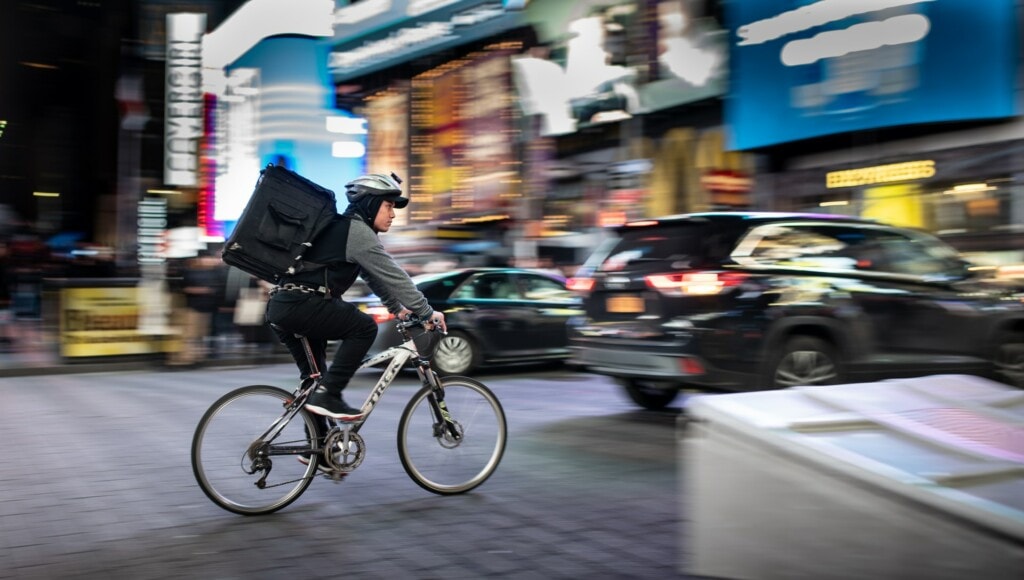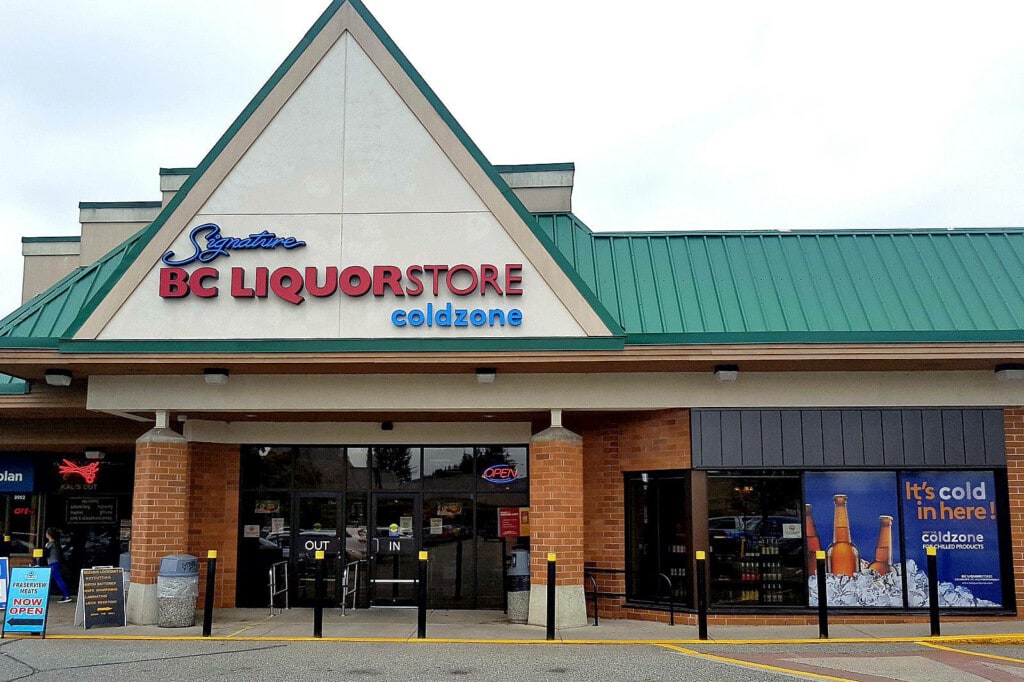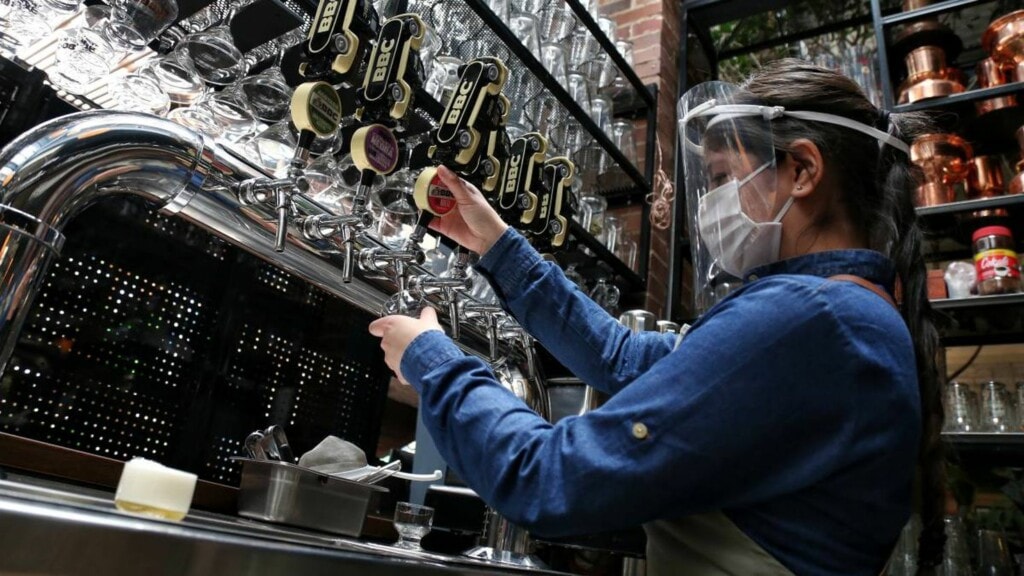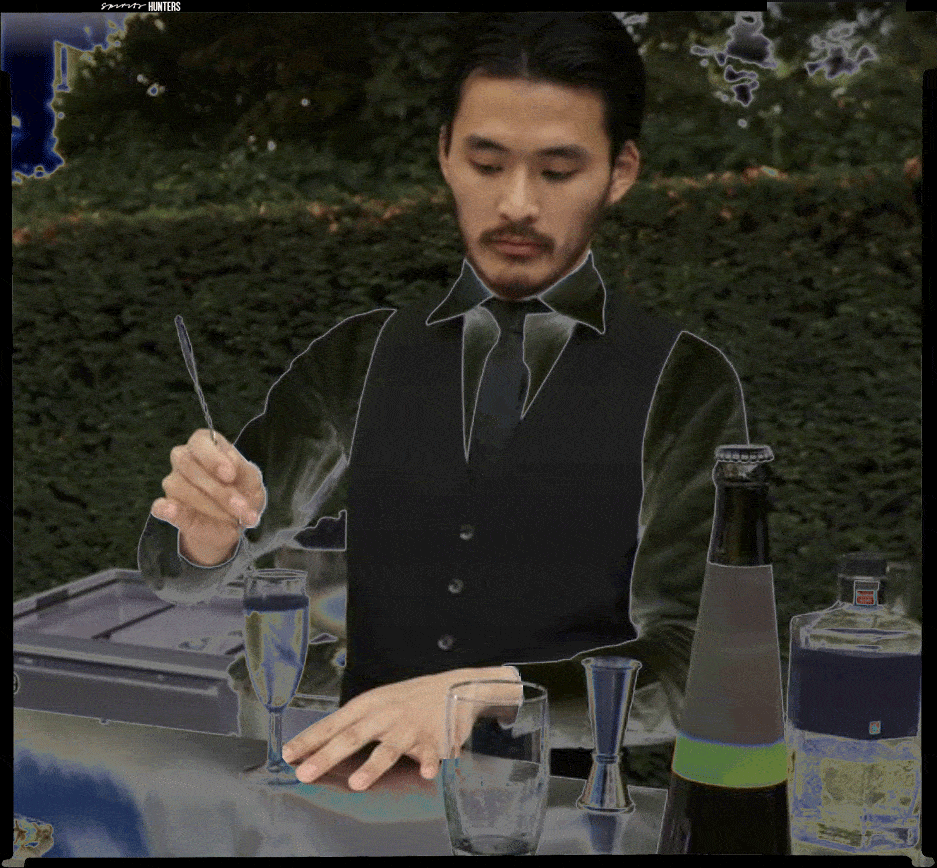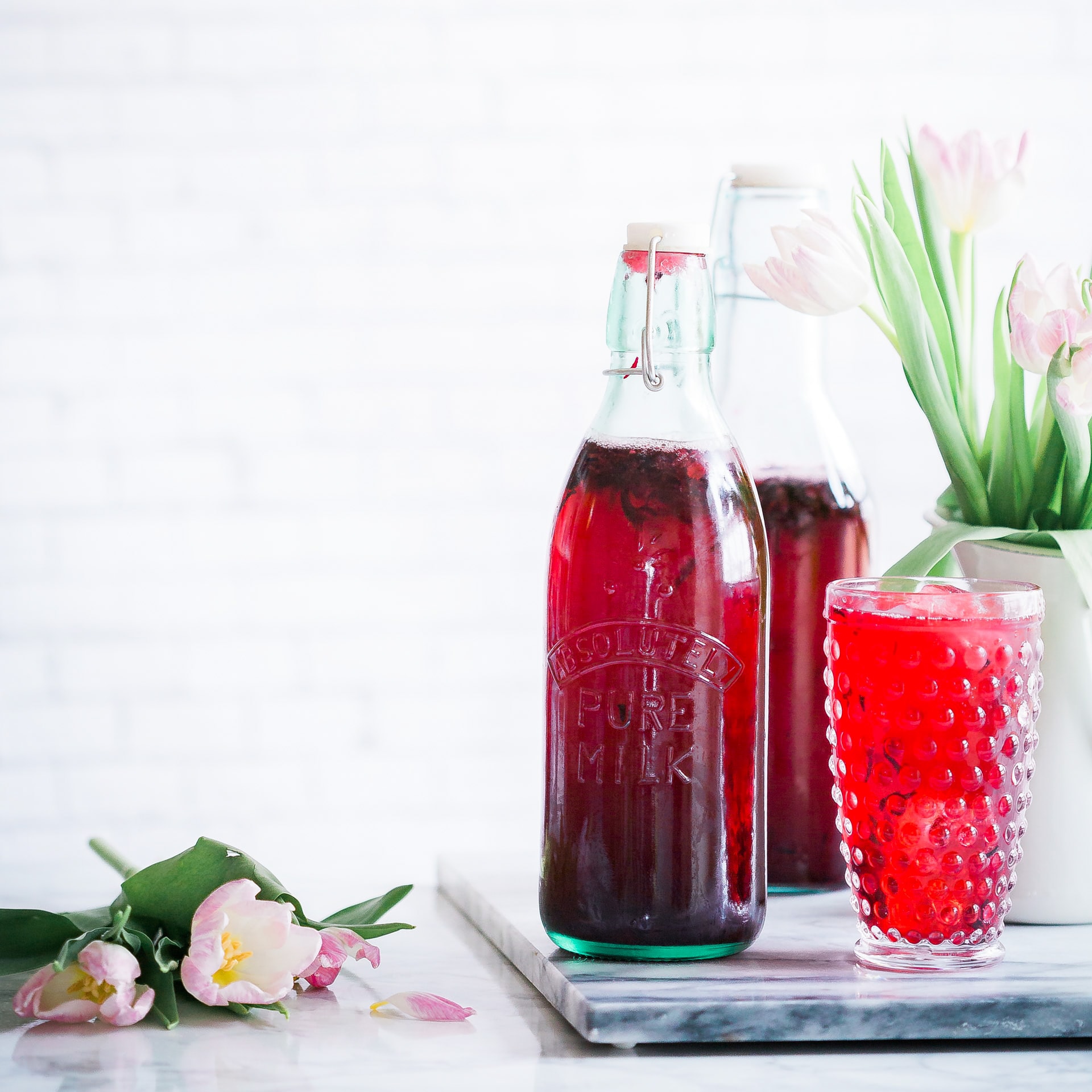
The Future of Take-Out Alcohol: Will It Stay or Will It Go? By Tara Nurin
During the pandemic, bars and restaurants had to keep innovating in order to survive. An idea became the mainstay… Tara Nurin talks the future of take-out alcohol.
Photo by Brooke Lark on Unsplash
It used to be one of Bourbon Street’s most magical allures – the nearly unique ability to saunter up to a bar, order a Hurricane, and saunter back into the New Orleans heat, cold cocktail in hand. In few American cities was public alcohol consumption like this legal, and NOLA’s exception to the norm added to its carnavalesque mystique.
This once-special experience became somewhat commonplace during the first year of the COVID-19 pandemic, when lawmakers in and outside of the United States issued emergency declarations to temporarily legalize take-out alcohol as a way to pump new revenue streams into bar and restaurant industries that desperately needed any support they could get.
Two years and four variants later, this extraordinarily popular pandemic silver lining seems to be keeping its shine as 18 US states and three Canadian provinces have made this provision permanent. Behind them lie a long line of governments either extending the timeline or considering legislation to sanction it in perpetuity.
Scattered non-North American nations also relaxed their liquor laws, though others seem to have made them more restrictive. And across the globe, the move still faces opposition in some very surprising places.
Photo: A rider in New York | Brett Jordan
Take-out alcohol in the United States
On June 29, 2020, the governor of Iowa became the first to approve a law to permanently permit on-premise drinking establishments to sell mixed drinks to-go.
At the time, 30 other states, plus the District of Columbia, had enacted similar, albeit temporary, provisions, with at least five more joining the party for some period during the pandemic. Since then, 17 states, plus DC, have followed Iowa’s lead. Several more are considering legislation to the same end, while 14 states beyond that have extended the temporary measure – some several times already – through as late as 2026.
Lisa Hawkins, senior vice president of public affairs for the Distilled Spirits Council of the United States (DISCUS), says, “We continue to advocate in states for legislation to make cocktails to-go permanent or extend the measure, in order to provide restaurants with increased stability as they slowly return to normal operations. … Alcohol sales can make up more than a quarter of a restaurant’s overall sales, which makes cocktails to-go an important revenue stream as restaurants continue to bounce back.”
The National Restaurant Association (NRA)* estimates that take-out alcohol represented approximately $30 million in monthly sales for New York’s full-service restaurant industry, which likely equaled approximately $1.2 million in additional state tax revenues every month for the year or so that New York permitted it.
“Typically, alcohol, especially cocktails, is one of your highest margins,” said NRA vice president for state affairs and grassroots advocacy Mike Whatley in an interview. “When you’re relying more on takeout and delivery, if you’re missing cocktails to-go, you’re missing that revenue stream.”
___________________
[*] The organization that lobbies Congress on behalf of the restaurant industry in the United States.
But New York businesses have been missing that revenue stream since June 2021, when the temporary law enacted to allow individual drinks-to-go to go out with takeout and delivery orders expired without action from state lawmakers. In January, Gov. Kathy Hochul introduced it in her proposed FY’23 budget, calling it the most popular item in the document. In March, both chambers of state government refused to include it in their own versions.
State senators made explicit their opposition within the body of their budget proposal. “The Senate intentionally omits the Executive proposal to allow on-premises establishments to sell wine or liquor drinks for take-out or delivery,” they wrote.
Despite strong support from the governor and the mayor of New York City, the take-out alcohol initiative has failed because of the efforts of New York’s liquor store lobby, which argues that its members accepted the competition during indoor dining bans as the only way for bars and restaurants to survive.
But as dine-in businesses reopened, these retailers claim their on-premise counterparts both double dipped and crossed too far into their lane by subversively selling full bottles of product instead of approved single servings only.
Photo: Take-out alcohol cocktails pouches | Blue Amber Design / Shutterstock
“They were becoming a liquor store, and that’s not fair to us if they become a liquor store,” Stefan Kalogridis, president of the New York State Liquor Store Association, told Gothamist.
While off-premise suppliers in New York and elsewhere may not welcome the overlap, they continue to do better financially than before the pandemic, and on-premise purveyors continue to do worse.
According to SipSource industry analysts, the market share of spirits sales at bars and restaurants currently sits at only 88% of its pre-pandemic position, while beer and wine have only recovered to an 80% share relative to the off-premise channel.
Meanwhile, wine and spirits share is still above pre-pandemic levels in all off-premise channels except club stores like Costco and Sam’s Club and mass market stores like Target and Walmart.
Take-out Alcohol in Canada
Before the pandemic, Canada’s provincial governments boasted the dubious claim of holding some of the world’s strictest controls over sales of alcohol. In many provinces, practically nothing was privatized and literally everything – both retail and wholesale – had to be purchased through Liquor Control Boards (LCBs)** .
[**] According to Mothers Against Drunk Driving, Canada’s provincial liquor boards “regulate access to alcohol through outlet locations, limits on hours of operation, minimum pricing, and taxes.”
_________________________
The pandemic has eased these restrictions in ways that Canada’s top spirits lobbyists believe have forever altered the what and where of how Canadians can buy their alcohol. Three of the country’s biggest provinces (Ontario, Alberta and British Columbia) have permanently legalized the sale of take-out alcohol with drinks and bottles to go at bars and restaurants, and Quebec is working its way through legislation to make its pandemic-era permissions permanent as well.
“It’s here to stay,” says Sean Beckingham, who manages digital and social marketing for DISCUS in Canada. “They’ll never undo that.”
In Ontario, whose LCB boasts itself as one of the biggest buyers and retailers of alcohol on the planet, the government started loosening its laws by allowing private restaurant owners with liquor licenses to sell take-out alcohol as well as for delivery in bottles of spirits.
But Canadians quickly discovered that liquor doesn’t generally come in sizes convenient for drinking with a single meal so the government almost as quickly sanctioned take-out alcohol like single-serve mixed cocktails-to-go for these license holders, as well.
Beckingham says Ontario is already seeing an unprecedented proliferation of private bottle shops popping up in restaurants, and at least one grocery store has put in a restaurant to get the license it needs to sell take-out alcohol in bottles of liquor and drinks-to-go (groceries won the right to sell bottles of beer and wine five years ago).
These vendors can even sell items not listed at the LCB, including imports that previously had to be purchased by the case.
Photo: A BC Liquor Store. (Wikimedia Commons)
Not only is the new paradigm putting bartenders and merchants back to work, it’s putting more products on the shelves and more purchasing power in the hands of consumers who can now shop, for instance, at a new store that specializes exclusively in bourbon.
“It’s going to be awesome for us to allow for more diversity and try things,” says Beckingham. “The LCB only has so much shelf space and it can cost a lot to get it on the shelf. It opens up possibilities for smaller producers and is a great way to test product.”
“It’s proven very popular with the public,” says Jan Westcott, president and CEO of the Spirits Canada trade organization.
He says, however, the popularity has proven a bit less widespread in the more conservative eastern provinces and in those like Manitoba and Saskatchewan, where private citizens own some to all of the liquor stores.
“They wanted bars and restaurants back into the single drinks business, like a ‘Stay in your lane kind of thing,’” he says.
But in British Columbia, he says, “Stores stepped up and said, ‘This is what should be done.’ Restaurants and bars are customers of theirs and they wanted to see their customers come back.”
Take-Out Alcohol Globally
Judging from a geographically diverse selection of countries outside North America, COVID didn’t seem to impact liquor laws too much on a larger scale.
Though many nations did impose strict lockdowns that kept commercial and residential doors closed for months at a time, the laws themselves appear to have mostly remained either as conservative or liberal as they were prior to the outbreak. Some exceptions do, of course, exist.
As a professional brewer in Switzerland, Lana Svitankova has witnessed extremely different approaches to public consumption laws in her travels but has tracked no legal differences before or after the pandemic.
“Consumption of alcohol in public spaces in Switzerland was never forbidden (you can drink your beer wherever you want). During COVID there were no limitations on consuming food/drinks in open areas,” she emails.
Meanwhile, Stockholm-based beer-sales veteran Connie Askenback watched neighboring Finland ease into letting producers sell boozier-than-usual products directly to their customers during COVID, even though, like Sweden, it normally caps sales of alcohol at 3.5% ABV anywhere outside of government-run stores. Sweden, however, didn’t try to keep up with the Finns.
Askenback says, “That’s not ever been on the table in Sweden. Even during the pandemic the industry associations haven’t mustered up more than a disappointed Facebook post.”
In Medellin, Colombia, 20Mission Cerveza co-owner Darby Butts says people can generally drink in public as long as they’re not disturbing the peace.
But during COVID, the country had some of the most restrictive and confusing lockdowns on earth, at times allowing people out of their homes only once or twice a week to run errands (including alcohol runs) and at other times setting spur-of-the-moment dry laws for holidays and long weekends. Sometimes state laws would conflict with federal ones.
Photo: bartender serving beer at a bar in Colombia | Álvaro Tavera – Colprensa
Butts says take-out alcohol, delivery and to-go sales shot up and have stayed up, thanks in part to his brewery’s well-received virtual tastings.
“Naturally, we saw a huge spike in take-out alcohol sales because people were trapped in their homes and couldn’t go anywhere,” he says. “I think our virtual tastings helped that because we are in a very young and growing craft beer market and the lockdowns allowed us the opportunity to educate a captive audience.“
Now, he says, “Things are for the most part ‘normal’ again and people take their drinks between bars in the nightlife areas of the city, just like they did pre-pandemic.”
As for New Orleans, that city imposed some of the nation’s strictest lockdown restrictions on eateries and drinkeries during the first few waves of the pandemic; but like Medellin and much of the United States, bars are back open for business as usual.
What remains to be seen is whether it can maintain its dominance as an American drinking capital now that so many other cities are offering what once made it so special.
About Tara Nurin
Photo: Tara Nurin
Tara Nurin is a freelancer who primarily covers the business and culture of craft beer, alcohol and culinary tourism. Her writing has been published in Forbes, Food & Wine, Wine Enthusiast, USA Today and many additional media outlets, which has won her the Food Writer of the Year designation in a competition hosted by the Wine School of Philadelphia. She leads craft beer pairings and seminars (specialty is beer and chocolate), in addition to teaching university-level beer and spirits courses and speaking on panels hosted by entities like the Smithsonian Institution.
She volunteers as the archivist for the international Pink Boots Society for the advancement of women in beer and founded NJ’s original beer-education group for females. She’s an official Beer Judge Certification Program judge, a former TV-news reporter and radio host, and an urban pioneer on the scenic Camden, NJ, waterfront.
Don’t drink and drive. Enjoy responsibly.
News
Stay tuned and discover all the news in the Spirits World for professionals and amateurs, by our Spirits Hunters’ experts.
See all posts in this category. Join the community on Reddit
Join the community on Reddit
Spirits Hunters is a community dedicated to spirits and the world of mixology. Feel free to talk about the world of mixology and bartending here!
Join


